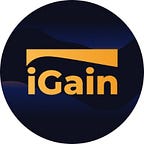Explain Like I’m 5: Derivatives
Derivatives may sound complicated but it’s just an agreement between two parties
TLDR:
- A derivative is basically a contract between two parties.
- The most common types of derivatives are forward, future, option, and swap.
- Derivatives are used to hedge positions, increase leverage, or speculate on an asset.
In our ever-changing world, derivatives actually play an important role in our lives. We use them in a variety of ways, from the simple to the complex.
In this blog post, let’s explore some of the ways derivatives touch our lives on a daily basis!
What are derivatives?
A derivative is simply a type of asset that is dependent on, or derived from, another asset.
For instance, you and your friend are in an art gallery, and both of you found a sculpture worth $1,000. But… you and your friend are in a disagreement:
- Your friend thought it was an absurd price valuation and believes that it will be worth half in 3 months.
- You, on the other hand, saw something spectacular in the art and were so optimistic that its value will double in 3 months.
You and your friend then decided to bet $100 on whether the price of the art will be worth half or worth twice in 3 months from the original price today. Come 3 months, the price soared almost triple the initial valuation!
New to trading? Try crypto trading bots or copy trading
The money that you (and not your friend) just profited from was based on a derivative because both of you never bought the sculpture, to begin with. It was rather, derived from the price of the sculpture, on whether it will go up or down in value. And that is the concept of derivatives.
What are the different types of derivatives?
There are many types of derivatives in the market but the most common are forwards, futures, options, and swaps.
They are all unique but the idea is similar — they are all contracts between two parties that agree to trade an asset at a specific price and time in the future.
Now, let’s say, instead of agreeing to pay each other $100, you just decided to approach the artist of the sculpture and negotiate to buy the art at the price of $1,050 in 3 months (because you don’t have enough cash right now).
Forwards/Futures: You and the artist wrote it down on the contract: You will buy the sculpture at $1,050 in 3 months, regardless of its valuation at that time. If in 3 months, the sculpture price appreciates to $1,500, then it means you earn $450. If it depreciates to $900, then you have lost $150. That is a forward contract — you are obligated to honor your contract regardless of the outcome
Forward and Future are just the same, the only difference is forward is private, and the latter is normally sold on public exchanges.
Options: An option shares the same concept with Forward/Future, however, instead of having the obligation to honor your contract, you have the “option” not to fulfill it, at the cost of a premium. So, let’s say you are sure the sculpture will be worth $1,500 in 3 months, but you got cold feet. You want to be sure, in case you are wrong, that you will have the option not to buy the sculpture, so you paid the artist $50 for that option to opt-out.
Swaps: Swap, on the other hand, is exchanging a security asset for another. That’s like asking the artist if you could trade your mom’s painting for his sculpture.
Where can I use derivative products?
Derivatives are commonly used when speculating or wanting to get exposure to certain financial assets without actually owning them, like the ones you see on crypto trading exchanges.
In the real world, you have probably used the concept of derivatives without even knowing it is a form of a derivative.
A good example would be buying a lot of gasoline vouchers in advance if you think their price is going to increase in the next few days. Most airline companies do this in a form of a supply contract to prevent extreme fluctuations in oil, which is one of their biggest operational expenses.
Are derivatives risky?
Derivatives don’t have to be complicated or risky. In fact, most of the time, it actually protects you from risks. At least, that’s what iGain does.
The iGain platform make use of derivative tokens in order to hedge the users’ interest rates from fluctuation, thereby making it fixed.
For instance, if you lend 1,000 USDC on iGain at 1.99% APY, the protocol will automatically compute for the amount of SHORT tokens you’ll need to purchase to protect you from volatility.
These SHORT tokens act as a derivative and it earns when the interest rate goes down than the rate you have locked it in.
That means, whenever the interest rate for USDC goes down less than 1.99%, your SHORT tokens will earn a profit and will subsidize the difference on the rate changes, so you can be asure that you will still get the full 1.99% APY.
This is just one example of how derivatives can be utilized to hedge you from market volatility.
Conclusion
Derivatives play a vital role in our globally interconnected economy today. Given that, it is crucial to learn its concepts and know how to use them to your advantage, especially in risk management.
